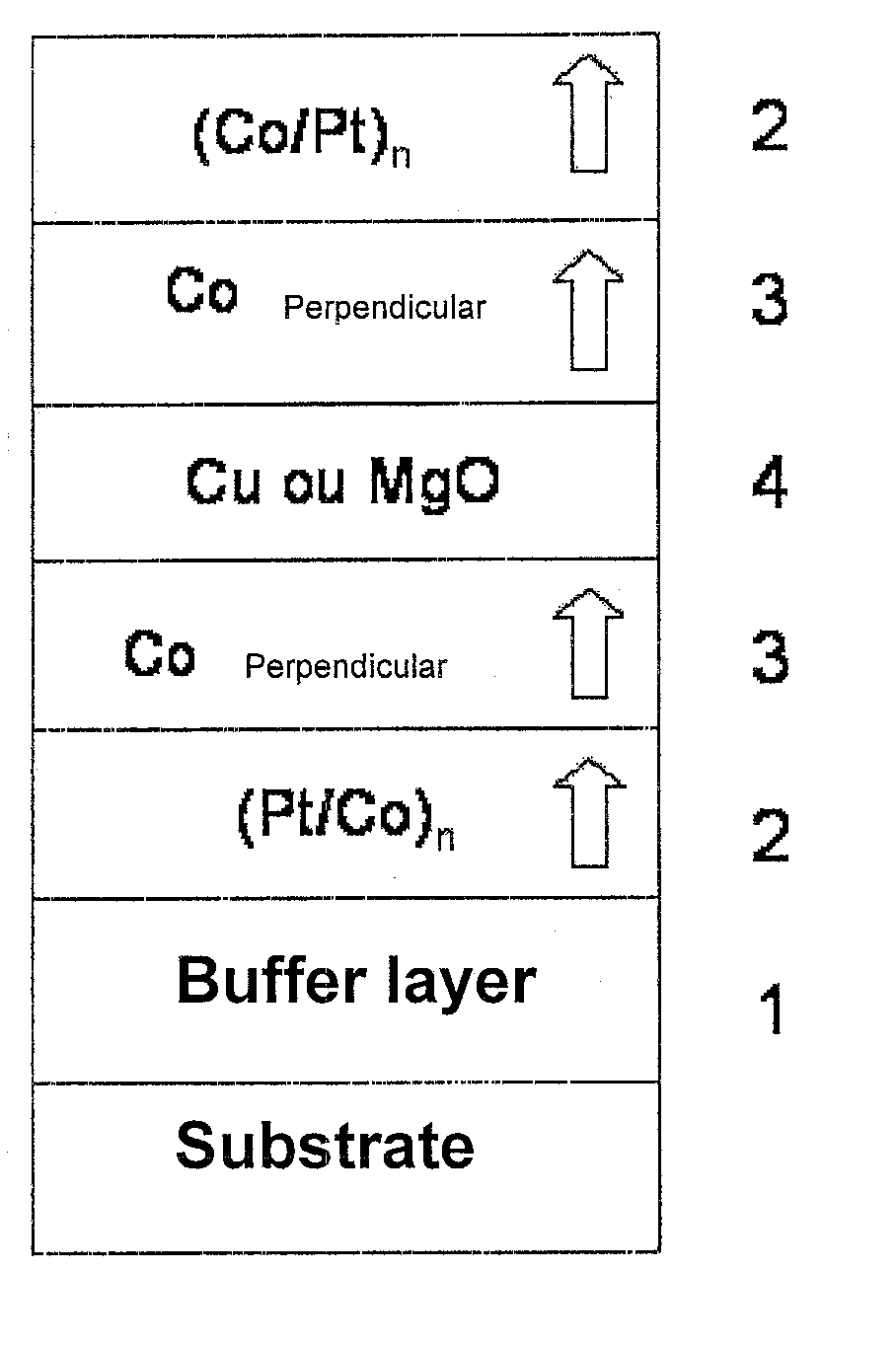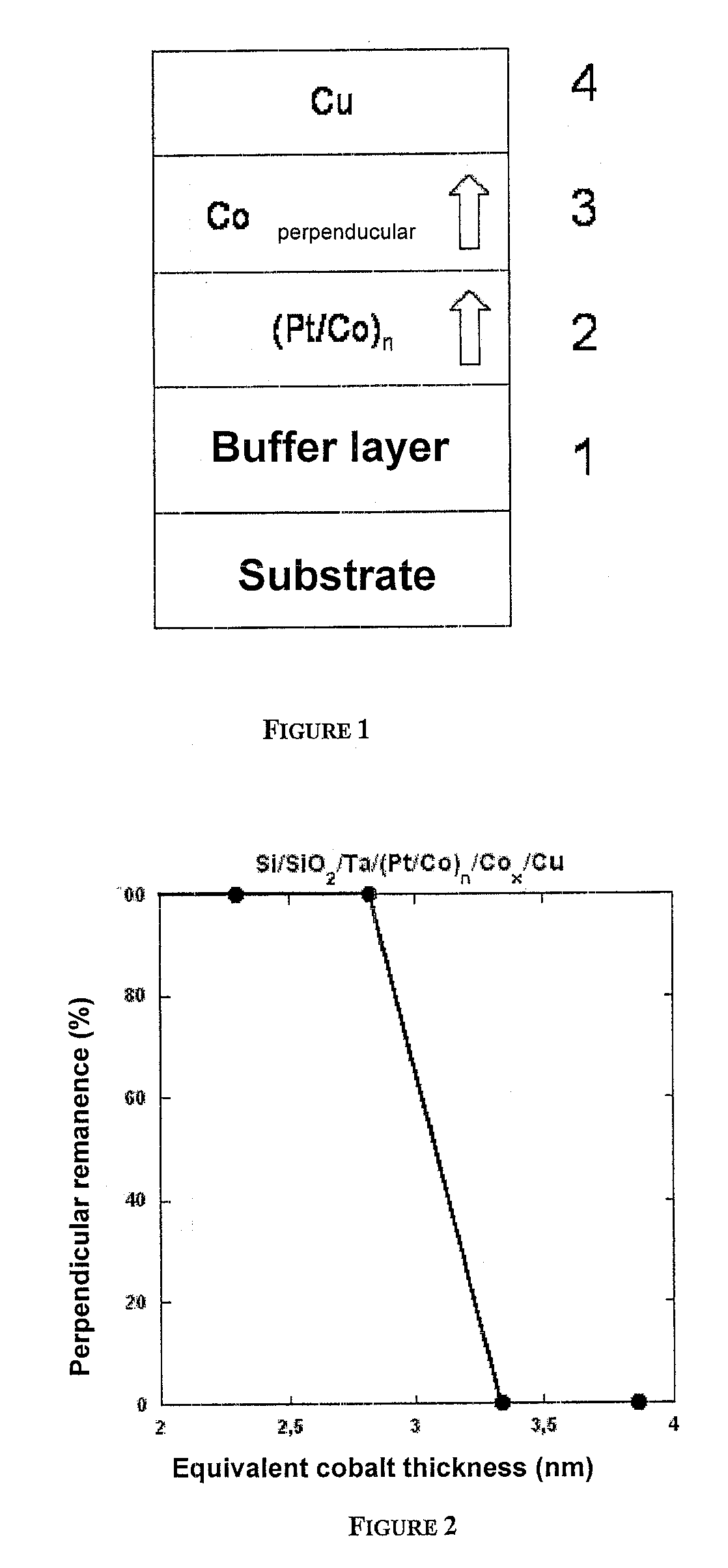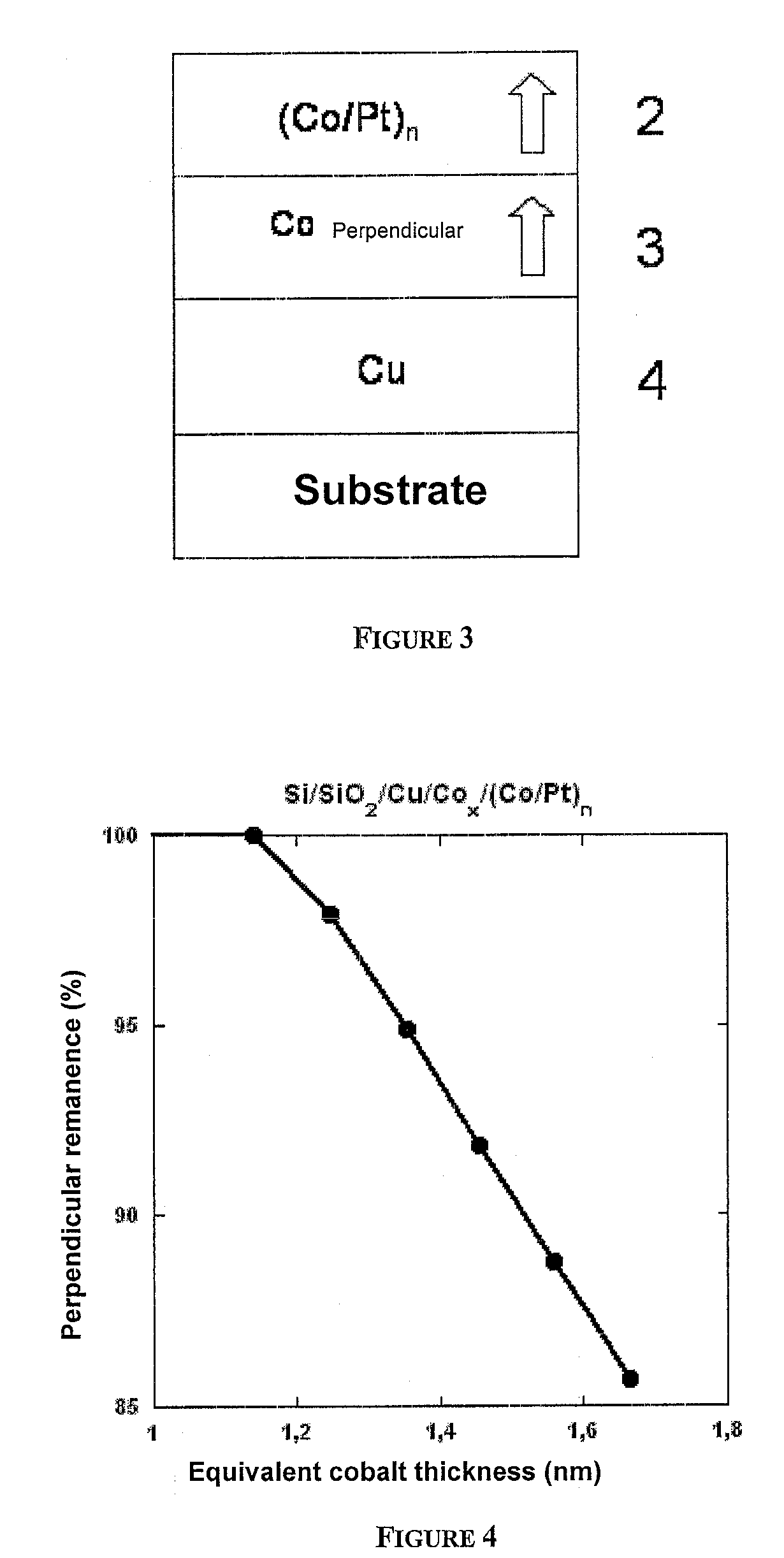Thin-film magnetic device with strong spin polarisation perpendicular to the plane of the layers, magnetic tunnel junction and spin valve using such a device
- Summary
- Abstract
- Description
- Claims
- Application Information
AI Technical Summary
Benefits of technology
Problems solved by technology
Method used
Image
Examples
first embodiment
[0093] In the invention, more especially shown in FIG. 1, this buffer layer 1 consists of a thick layer of copper topped by a layer of tantalum and / or platinum. The thickness of the tantalum layer is 2 to 20 nm and advantageously 3 nm. The thickness of the platinum layer is 2 to 30 nm and advantageously 20 nm.
[0094] A layer 2, consisting of a stack of layers of platinum and cobalt in a pattern (Pt / Co)n is then deposited where n is the number of repetitions of the platinum / cobalt stack.
[0095] The thickness of the cobalt layers of multilayer 2 (Co / Pt)n is 0.2 to 1 nm and advantageously 0.6 nm. The thickness of the platinum layers is 0.1 to 2 nm and advantageously roughly 0.3 nm. In addition, the number of repetitions of the stack n (Co / Pt) is 1 to 10.
[0096] A layer 3 made of a ferromagnetic material with a high rate of spin polarisation is then deposited on this layer 2. In the example described, this layer 3 is made of cobalt. One can, however, advantageously substitute cobalt by a...
second embodiment
[0124] In a second embodiment, shown in FIG. 3, the structure described in the preceding example is reversed, giving a succession of substrate / copper / cobalt (ferromagnetic material) / multilayer (Co / Pt)n. This embodiment is symmetrical with the preceding embodiment, “effective” cobalt layer 3 now being located, in terms of the sequence in which the various layers are deposited, underneath cobalt / platinum multilayer 2.
[0125] The thickness of the cobalt layers of cobalt / platinum multilayer 2 is 0.2 to 1 nm and advantageously 0.6 nm.
[0126] The thickness of the platinum layers of cobalt / platinum multilayer 2 is 0.2 to 2 nm and advantageously 1.6 nm.
[0127] The number of repetitions of the cobalt / platinum stack is 1 to 10 and advantageously 5.
[0128]FIG. 4 shows, for such a structure, more particularly the Cu / Co / (CoO0.6 / Pt1.6)5 / Pt structure, the variation in remanent magnetisation, measured with a magnetic field applied perpendicular to the plane of the layers, as a function of the cobalt...
fourth embodiment
[0137] As in the case of the fourth embodiment, this will therefore give a free layer with planar magnetisation but a weak demagnetising field, this free layer being, in this embodiment, located above the anchored layer in terms of the sequence in which the various layers of the device are deposited.
PUM
| Property | Measurement | Unit |
|---|---|---|
| Magnetism | aaaaa | aaaaa |
| Anisotropy | aaaaa | aaaaa |
Abstract
Description
Claims
Application Information
 Login to View More
Login to View More - R&D
- Intellectual Property
- Life Sciences
- Materials
- Tech Scout
- Unparalleled Data Quality
- Higher Quality Content
- 60% Fewer Hallucinations
Browse by: Latest US Patents, China's latest patents, Technical Efficacy Thesaurus, Application Domain, Technology Topic, Popular Technical Reports.
© 2025 PatSnap. All rights reserved.Legal|Privacy policy|Modern Slavery Act Transparency Statement|Sitemap|About US| Contact US: help@patsnap.com



